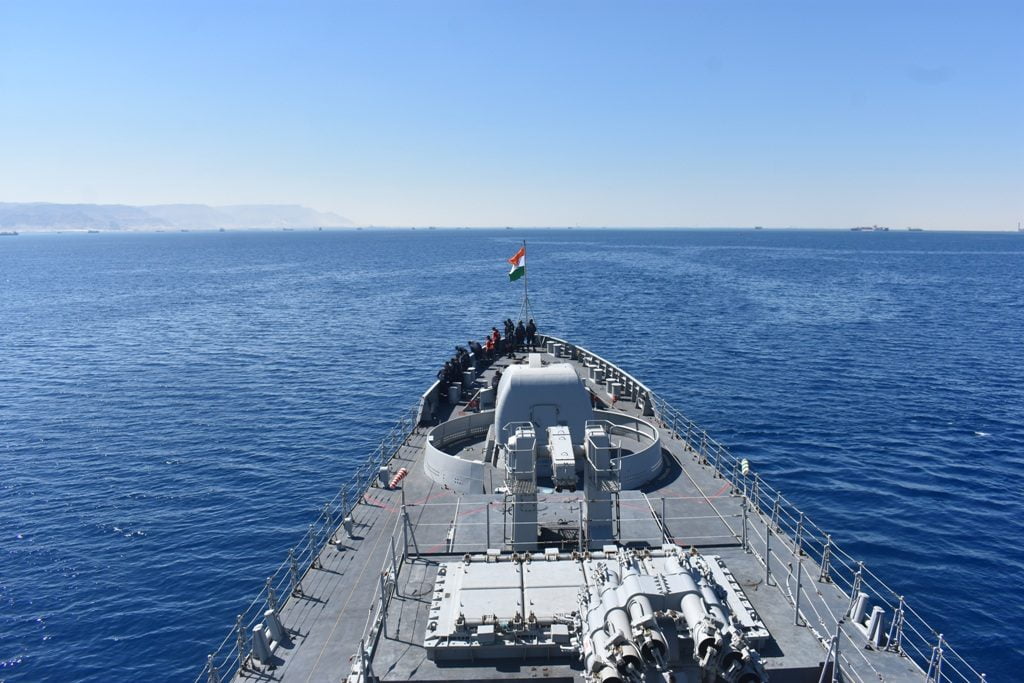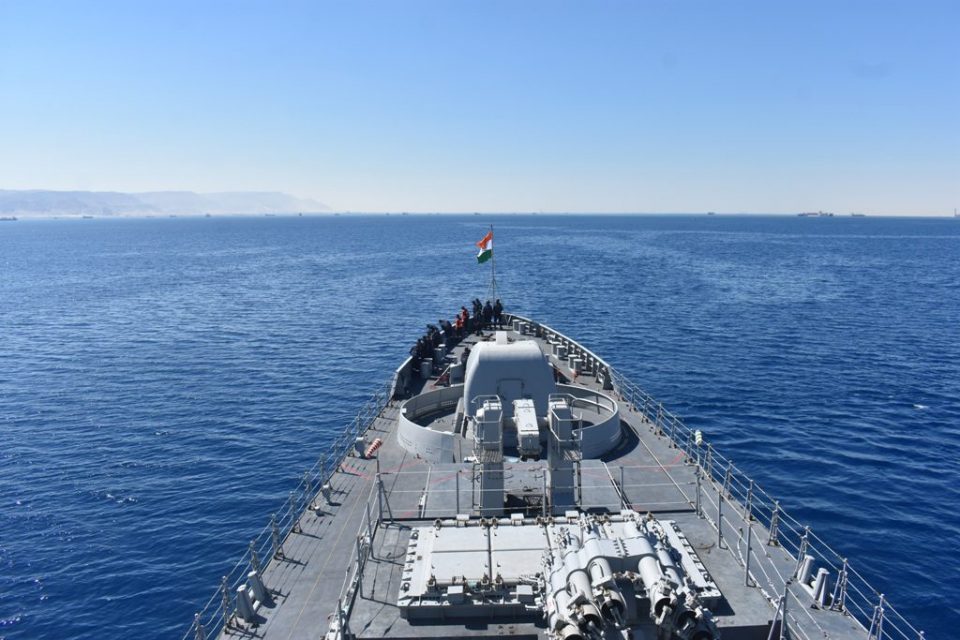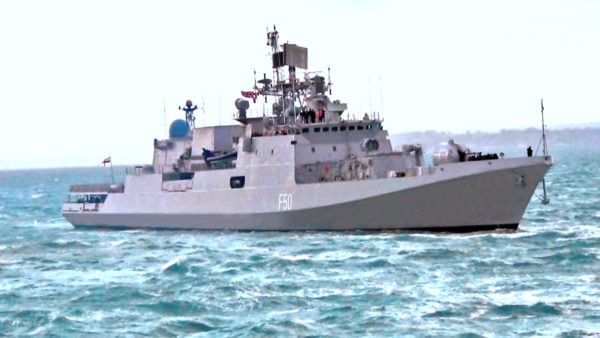INS Tarkash as part of the Indian Navy’s Western Fleet arrived in Sweden on July 2019.
According to India Strategic:
This marks the first visit of an Indian Naval Ship to Swedish shores after a gap of more than 15 years.
During her three day visit, professional interactions, sports and social engagements are planned to further enhance and strengthen the maritime cooperation between the two countries while pursuing the common goal of safe and secure seas.
The visit is part of Indian Navy’s mission of building ‘Bridges of Friendship’ and strengthening international cooperation with friendly countries.
The current visit seeks to underscore India’s peaceful presence and solidarity with friendly countries, thereby allowing both India and Sweden to meet the growing challenges of the maritime environment.
INS Tarkash, commanded by Captain Sathish Vasudev, is a state-of-the-art stealth frigate of the Indian Navy, equipped with a versatile range of weapons and sensors capable of addressing threats in all three dimensions. The ship is a part of the Indian Navy’s Western Fleet and is under the operational Command of Flag Officer Commanding-in-Chief, Western Naval Command.
India and Sweden have had a number of high level bilateral visits and interactions resulting in a rapid growth in relations across a broad spectrum. The two navies have also been regular contributors to the global operations against piracy.
She started her current round of visits in Egypt with her arrival in Alexandria on June 28th.
According to India Strategic:
In a demonstration of India’s commitment to its ties with Egypt and of Indian Navy’s increasing footprint and operational reach, Indian Naval Ship Tarkash arrived at Alexandria on June 28th for a three day visit, as a part of Western Fleet Overseas Deployment programme.
During the visit of Tarkash, professional interactions are planned with the Egyptian
Navy towards further enhancing co-operation between the two forces. In addition, calls on senior Government and military authorities, sporting, cultural interactions, exchange visit of ships personnel and sharing of best practices, aimed at strengthening ties and mutual understanding between the two Navies, are also planned.
India and Egypt are two of the world’s oldest civilizations. Building upon the rich and longstanding relations that have existed between India and Egypt, both nations have developed warm relations in several spheres. A number of bilateral agreements for cooperation and cultural exchange exist between the two nations.
The geostrategic location of Egypt provides it the unique advantage of being at the crossroads of Africa, Asia and Europe. Crucial Sea Lines of Communication pass through Red Sea into the Mediterranean through Suez Canal in Egypt.
The current visit seeks to underscore India’s peaceful presence and solidarity with friendly countries and, in particular, to strengthen the existing bonds of friendship between India and Egypt.
She then visited Morocco on July 8th.
According to defenceWeb:
The Indian Naval Ship (INS) Tarkash has arrived at Tangier, Morocco, for a three-day visit as part of an ongoing overseas deployment by the Indian Navy to the Mediterranean Sea, Africa and Europe. The visit seeks to strengthen the bonds of friendship between India and Morocco.
This is according to the Indian Ministry of Defence, which said the stealth frigate arrived in Morocco on 8 July.
During the port call, various dignitaries and government officials of Morocco including senior naval officers are scheduled to visit the ship. The ship will also take part in numerous professional, social and sporting interactions planned with the Royal Moroccan Navy. On departing the port, INS Tarkash will carry out a Passage Exercise at sea with ships of the Royal Moroccan Navy.
INS Tarkash (F50) is the second of the three Teg-class stealth frigates acquired from Russia and was commissioned into Indian naval service in November 2012….
The vessel has made other visits to countries around the world, including South Africa. She has also taken part in anti-piracy operations off East Africa.
Manned by 300 crew, the 125-metre-long, 3 700-tonne Tarkash carries a wide range of anti-ship, ant-air and anti-submarine weaponry, including the supersonic BrahMos missile, 100 mm naval gun, optically controlled 30 mm Close-In Weapon System, torpedoes and rockets. She typically embarks a Chetak naval helicopter.






